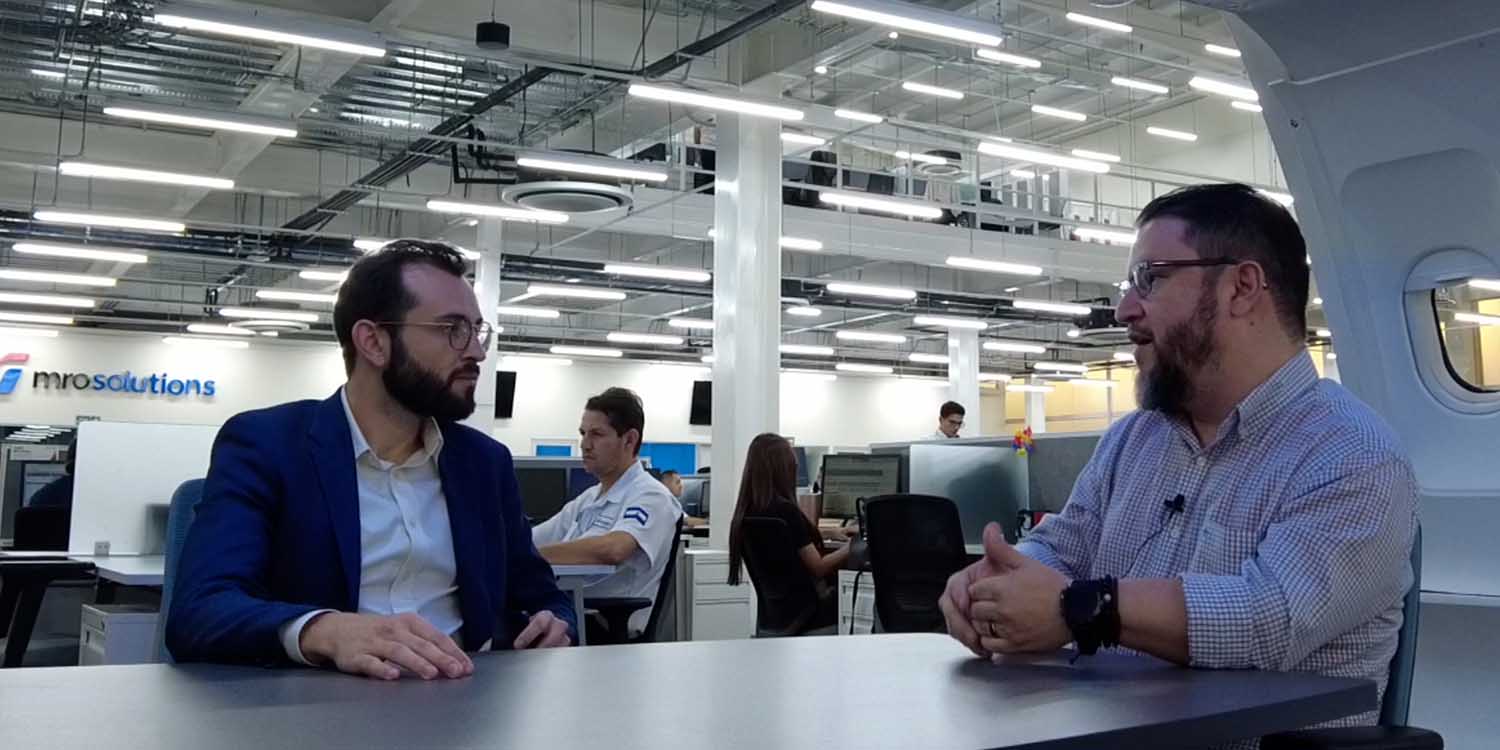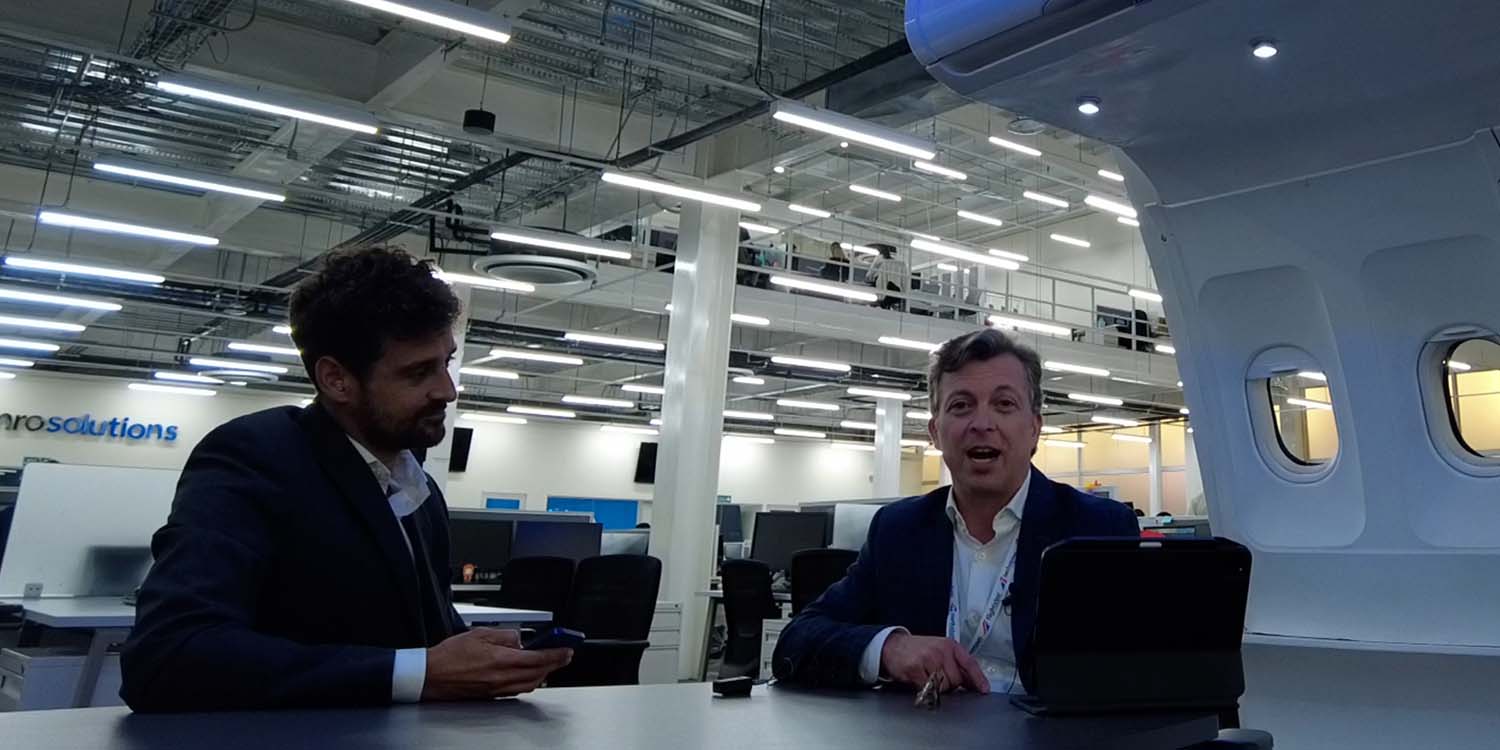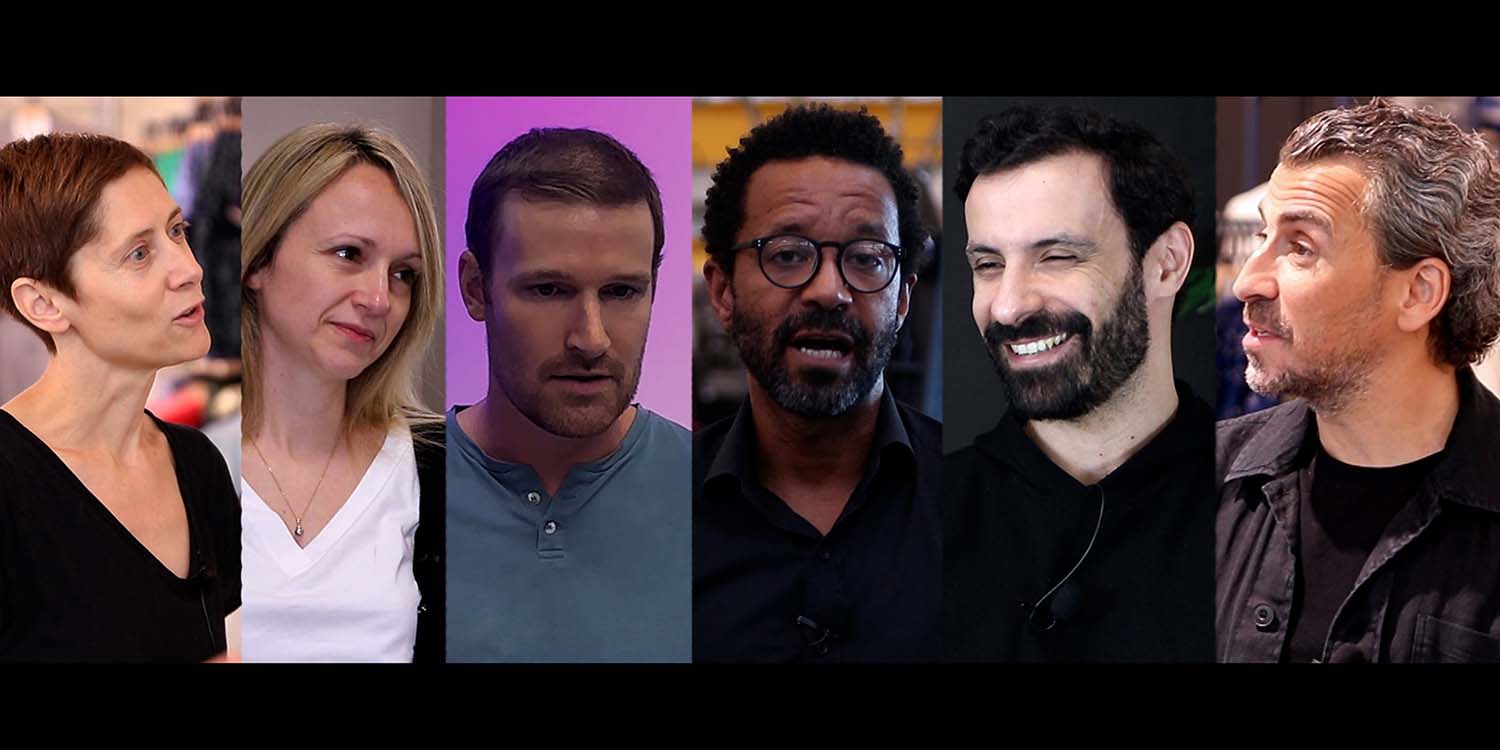00:00:00 Bruno and Conor catch up
00:00:50 Bruno provides an overview of the collaboration
00:02:53 The importance of embracing uncertainty
00:04:00 Bruno explains how the collaboration is going
00:05:18 Bruno lists the key indicators of success
00:07:20 Example of omnichannel decision optimization
00:09:10 The scale of daily decision-making at Worten
00:11:50 Bruno’s thoughts on the future of the collaboration
Summary
Filmed onsite in summer 2024 at Worten’s flagship store in Lisbon, Bruno Saraiva (Head of Stock and Space Management at Worten Portugal) discusses Worten’s ongoing supply chain revolution. Bruno explains to Conor (Head of Communication at Lokad) how the companies are optimizing decision-making for Worten’s enormous network of 300+ stores in Portugal. Bruno also elaborates on how his team utilizes the 45,000 daily decisions Lokad generates, and how this collaboration has led to, amongst other things, significantly reduced stock-outs and smoother warehouse dispatches.
Full Transcript
Conor Doherty: Welcome to a very special episode of LokadTV. Today we’re on site at Worten’s flagship store in Lisbon, and I have the pleasure of being joined by Bruno Saraiva, Head of Stock and Space Management at Worten. First of all, Bruno, good to see you again.
Bruno Saraiva: Thank you very much.
Conor Doherty: Thank you very much for the kickboxing session.
Bruno Saraiva: Well, that’s fine. It was very fun to do it with you guys.
Conor Doherty: So, we spoke about a year, maybe 15 months ago, and that was in Paris. You were actually my first interview in person.
Bruno Saraiva: Okay.
Conor Doherty: And now, you’re my first interview on site, so congratulations. But 15 months ago, we spoke at the start of the project between Worten and Lokad. So, in your own words, for people who didn’t see that video, could you summarize what exactly is the project you guys are working on?
Bruno Saraiva: Yeah, well, we tried to change and do a paradigm shift of Worten inventory management in terms of intelligence, how to dispatch, and how to purchase from a client’s point of view because availability is a great concern for us. But also, from a user’s point of view, because intuitive decisions and simpler and more efficient decisions are something that is very important for us moving forward.
Conor Doherty: I remember you used the phrase “reinvention.” You wanted to reinvent your supply chain and you used terms like financial perspective, talking about optimized decision-making. I’m just curious, why was it so important to reinvent the supply chain at Worten?
Bruno Saraiva: Well, if you’ve been in this area of business as long as I have, you’ll see that everything is very traditional still. And the clients are not up to it because if you wait for a product like one week or something is not in the store, then it’s not available, something that is not like a 2024 perspective for the client. So, supply chain needs to be reinvented; it needs to be quicker, more efficient, needs to be much more intelligent, and also needs to be cheaper. All that said and done, you need to have bigger, faster, and more efficient decisions in order to make that happen. That’s where Lokad comes in for Worten.
Conor Doherty: You very much sound like someone who is interested in the quantitative supply chain perspective. How is that different from things you did in the past?
Bruno Saraiva: Well, in the past, we made decisions based on past sales, past occurrences, and we tried to find the sweet spot. Today, we know and we embrace uncertainty, as Lokad’s motto says, and I think that’s a very truthful way to see how supply chain works. You need to look at a bunch of scenarios and try to avoid the ones that you really don’t want to happen in terms of strategy for the company. In Worten’s case, that would be stock-out events and having an unhappy customer. You also need to become more efficient. That kind of intelligence deals with a lot of information that today can only be dealt with technology. A human cannot do that in real time in order to make better decisions. What the human needs to do is interact with other humans, suppliers, commercial managers, marketing managers, and needs to become more lean in terms of the whole chain in order to dispatch the merchandise quickly. Price has a lot to do with it as well.
Conor Doherty: The first time we spoke, as I said, was 12-13 months ago. That was the implementation of the project. 12 months later, how is the reinvention going at Worten?
Bruno Saraiva: To be honest, better than I suspected, so congrats on that. And better, why? Because the results are better than I expected for the year. Of course, I also have a lot of trust in the solution. In terms of change management, I see stock managers and project managers from Lokad teams also have a lot of will to make this happen and make it happen like it really should. And that’s exactly how it’s going. It’s going really well. People are very happy with it. They are adopting it, wanting to work more with it, and also coming up with our ideas for what it should do. Now we enter that, I would say, dangerous zone. It’s like now it should do everything, and we cannot do everything because, as I said, it should be efficient. Something that is efficient should be simpler, and something that is very complex for the end-user is not simple.
Conor Doherty: You certainly seem happy, which I’m glad to hear. In terms of the KPIs, in terms of metrics, how are you measuring that the initiative is actually making a difference? Because, as you said, you want it to be lean, you want it to be efficient. How are you measuring those?
Bruno Saraiva: Well, from our point of view internally, we are measuring from the stock-out situations that have gone down a lot this year, so that’s really helping build the case. Also, we know that the stock is becoming more stable. It’s not that it has high zones of stocks when you have big campaigns, but it also returns to a stable, more harmonic level of stock. And also, the warehouse has become much more stable in terms of dispatch. That is a very big proxy in how we are measuring it. From an internal perspective, the external perspective is in terms of NPS, Net Promoter Score. Clients are happier with the out-of-stock situations. We were like 3% in the past, and this year it’s coming down to 1%. So, it’s coming a lot down with regard to this. I would say that has something to do with Lokad in the last year becoming live.
Conor Doherty: It sounds like Worten’s happy, the customers are happy, it sounds like a win-win situation.
Bruno Saraiva: Definitely, it should not be any other way. I would not say it otherwise.
Conor Doherty: As you can see, we’re in a huge store. This is in Colombo Shopping Mall, a huge store with lots of products. People come in; they might want to buy something. But you also operate an online platform as well. So, for anyone watching at home, let’s take an example. If I wanted to buy a TV, I might come here to this lovely store, or I might be lazy, stay at home, and order it online. How does Worten and Lokad make sure that whichever person, online or in person, orders the television, how do you make sure the TV is here?
Bruno Saraiva: As I talked about, Lokad is helping Worten to predict scenarios, warehouse scenarios, store scenarios. So, if someone is at home and wants to buy it online, most probably that stock will leave the warehouse. That prediction of demand is done in part by Lokad. It’s optimizing that point of exit of merchandise. The same for the store, and for each store, in fact. So, if you are from Porto, if you go to a Porto store today, you have more probability of finding a product than you have in the past without Lokad. And online is also because our RAL (Reorder and Allocation Logic) is also being optimized for the demand that online clients are asking for. And also, a funny thing, if you eventually are ordering it online but you want to pick it up in a store, that also is becoming more available because the demand that is being input by Lokad, the output is for each store. They predict not only the offline sales but the online pickups as well.
Conor Doherty: Let’s just scale this up because Worten has somewhere around 300 or 320 stores, 20,000 products, an online platform. That is an enormous amount of decisions. So, my question is, how many decisions does Lokad provide for, and do you guys use to make sure that there are fewer stock-outs and that customers are happy?
Bruno Saraiva: First of all, it’s 30,000 SKUs, not 20,000. Just to give you that, that’s even better actually for us. That’s very important for Worten. As of today, and also as I know this morning, we are up to 40,000 or 45,000 decisions per day in terms of dispatch for the stores and in terms of purchasing for our suppliers.
Conor Doherty: These are all automated decisions delivered every day. You don’t have to take out an Excel spreadsheet.
Bruno Saraiva: Nothing like that. What you have to do is to think about the category strategy that you want. You want to buy more from this or more from that, and Lokad will have those inputs coming in and output the data that you can optimize that decision. The same for the stores. So, if a store is selling more of this product offline and less of this product online, you would balance which kind of quantity of products should be sent from each store and from each strategy, because it can be an article that has a lot of demand and less other brands using the same article so you send more of that item or you can have the same cable for 10 brands and you send a little bit of each cable the happy will be client every time you go through the store.
Conor Doherty: I’m very glad to hear that because a big part of the quantitative supply chain of Lokad is to take all those simple, everyday, mundane, repetitive decisions, automate them, so then smart people like you and your team can focus on greater strategy. And it sounds like that’s what you guys are doing with the free time.
Bruno Saraiva: The time that is freed up allows us to do more with the same amount of people, and that’s very important for each company today. It helps people grow in terms of management capacity, in terms of decisions. It helps embrace other challenges because they have more time, and also helps to get a more proximity to the suppliers. The main issue and the secret of Lokad working 100% well is if you have stock available at the warehouse for dispatching, and for that, you need to have a very good service level from our suppliers. With that, it becomes well-rounded how the solution will become happy for everybody. Less stock, more availability, quicker decisions, quicker deliveries from our suppliers.
Conor Doherty: I think it was a year ago that you said something to the effect of, “The supply chain is important and worth fighting for.” So, my last question—because I don’t want to take any more of your time—is: What is the next step, or what are the next steps, in this fight, and how can Lokad help you?
Bruno Saraiva: I would say that we have two big fights. The next two big fights. One of it is our toxic stock. We still have toxic stocks. And I think Lokad can help us with that. That will be one of it, how we can optimize the grid in terms of our toxic stock and how we can leverage that decision quicker. And the other one, we are getting into spare parts business, we are getting into maintenance services. And as you guys know, you have a lot of experience with aviation in terms of parts, and who better than anyone else to help us in that journey.
Conor Doherty: Well, Bruno, nothing left to say but thank you very much for your time, and I very much look forward to the third installment.
Bruno Saraiva: As always.


